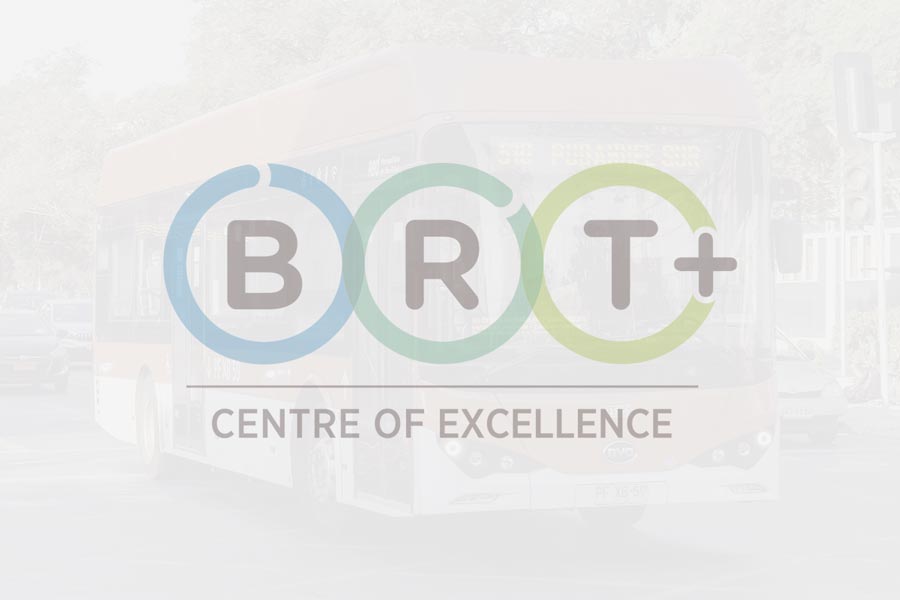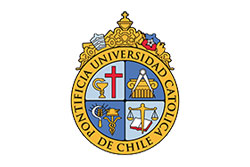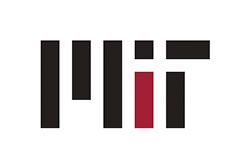Source: Daily Camera
It’s time to go home. You head to Market Street Station in Denver, where you work, to board a bus for Boulder, where you live. You just missed the bus. No problem — they depart every five minutes. You grab the next one. As traffic bogs down around you, the driver slips into the dedicated bus lane and motors at a steady speed up Interstate 25 to U.S. 36, passing bumper-to-bumper vehicles by the hundreds. On the way to Boulder, the bus stops at several full-service stations, picking up passengers who already have paid their fare at kiosks — no fumbling for change, no wasted time. Thirty-five minutes after leaving downtown Denver, you pull into the Table Mesa park-n-Ride.
The upshot: A rush-hour bus trip along U.S. 36 that just a few years ago couldn’t come close to beating a car is projected by 2035 to have a 17-minute advantage over a single-occupant vehicle. Welcome to the future of travel in the U.S. 36 corridor — the result of a $536 million effort by the Regional Transportation District and the Colorado Department of Transportation to build the first phase of a Bus Rapid Transit system, or BRT. Advocates say the system should make commuting between Boulder and Denver as simple and reliable as jumping on a subway train.
«In many ways, you’re going to get service that acts like rail service,» said Boulder County Commissioner Will Toor, an outspoken transit advocate who has worked on making improvements to U.S. 36. «We think BRT is going to be a real workhorse for this corridor.»
Some of the elements of BRT are already in place on U.S. 36. Pedestrian overpasses and slip ramps, which allow buses to simply pull over on off and on ramps, were built at nearly all of the interchanges in the last few years.
Other features, such as a bike lane and managed lanes that buses and carpools can ride for free and single-occupancy vehicles can ride for a price, are still on the horizon.
But the choices and investments transportation officials make in the corridor over the next few years are critical, because the highway will more than likely serve as a BRT model in the state.
«What we in the U.S. 36 corridor do will set the standard for what we do with BRT in the rest of the region,» said Nadine Lee, project manager for RTD’s U.S. 36 Bus Rapid Transit program. «We have to give people a reason to ride it.»
‘Rail-like service’
Bus Rapid Transit often is pitched as having the most desirable aspects of rail travel — exclusive lanes, rapid speeds, signal prioritization, high frequency and stations with easy boarding and real-time travel information — but at a much reduced price tag.
«It’s a high-quality service at a price you can afford,» Toor said.
Most transportation experts point to Curitiba, Brazil, as the birthplace of BRT in the 1970s, with many cities in South America since then building systems that now serve as the global gold standard.
More than a dozen cities in the United States, including New York and Los Angeles, have some form of BRT as part of their overall transit picture. In Colorado, transportation planners have proposed a BRT system for a 40-mile stretch of Colo. 82 between Aspen and Glenwood Springs, while in Fort Collins, the city is planning a BRT route along Mason Street.
But the U.S. 36 project is unique in that it incorporates BRT into a high-speed, multi-lane highway corridor that also is slated to one day have commuter rail service.
Earlier this month, stakeholders from RTD, CDOT, Boulder County and other municipalities and agencies with an interest in the project traveled to Los Angeles to study that city’s BRT system. They rode the Orange Line across the San Fernando Valley and the Silver Line in and out of downtown L.A.
Scott Page, manager of service planning for L.A.’s Metropolitan Transportation Authority, said since the city consolidated a hodgepodge of bus lines on the Interstate 10 and Interstate 110 freeways into the Silver Line BRT route 18 months ago, travel time across the 27-mile stretch has dropped by 20 minutes and ridership has risen by 37 percent.
RTD projects that transit ridership along U.S. 36 will go from 8,180 per average weekday currently to 14,600 by 2035. But Lee cautioned that trying to divine travel times and make comparisons over time is complicated by the fact that congestion will increase in the U.S. 36 corridor as the result of population growth.
Even so, the agency projects that in 2035 a BRT bus rider coming from Denver will arrive at Table Mesa park-n-Ride 17 minutes earlier than a motorist driving in the general-purpose lanes. A passenger on an express bus — which makes no stops between Denver and Boulder — should get there 24 minutes earlier, RTD predicts.
«We’re trying to get to rail-like service,» Lee said.
Improvements soon
And while most of the travel time savings projections go out 25 years, Lee said transit passengers will see improvements much sooner than that.
More than $300 million — largely a mix of FasTracks funds and federal grant money — has been secured to build high-occupancy toll lanes in both directions from I-25 to 96th Street at Interlocken. Construction could begin as early as next year and wrap up by fall of 2015.
Funding for continuation of the managed lanes out to Table Mesa park-n-Ride hasn’t been identified yet and there is no timetable for getting that part of the project done. However, a slip ramp and pedestrian bridge at Table Mesa is slated to go in by early 2013.
John Schwab, U.S. 36 managed lane project director for CDOT, said the high-occupancy toll lane will be operated similarly to how the toll lanes on I-25 are run, with motorists paying for access via a transponder they attach to their windshields.
Preliminary plans call for a painted buffer between the managed lane and the general-purpose lanes on U.S. 36. Without a physical barrier, Schwab said, toll-jumpers could be problem.
«We’ll be trying to minimize violators so we don’t lose toll revenues to pay back the bonds,» he said.
Another challenge, he said, will be getting buses to move from the inside lane through the bulk of traffic to the highway exits to make stops at the slip ramp stations.
«It’s important to have an efficient BRT system,» Schwab said.
Selling it to the masses
A large part of the system’s efficiency and success will come from buses that run on a high frequency schedule and are instantly recognized by passengers as part of a BRT fleet. RTD wants to run buses on the line every five minutes during peak periods so that people won’t feel the need to lug around a bus schedule.
«One of the things we’re trying to do right now is determine service identity and provide a user interface that makes it easy to ride,» Lee said.
She said there are no plans to change out the regional buses that currently run along U.S. 36 with new, sleeker looking vehicles, but that could happen down the road.
In the meantime, the existing fleet could undergo a makeover as part of a new BRT branding effort.
«There’s the possibility that there will be painting and bus wraps for branding,» Toor said.
RTD and CDOT are preparing for the future with plans to run fiberoptic cables along the entire highway corridor to light up real-time electronic signs at stations announcing the arrival of approaching buses and variable-message signs on the road to notify drivers of changing toll rates.
Bike lockers should also be available at stations to encourage people to use as much alternate transportation as possible.
Boulder County Transportation Department Director George Gerstle said that at its core, the proposed BRT system along U.S. 36 is all about providing people with choices about how to get from Point A to Point B on any given day.
«It’s not forcing people to say ‘I’m a bus person’ or ‘I’m a car person’ — it’s saying, ‘I can make the best choice for my day,'» he said. «Right now, people don’t have a choice for every type of trip.»
Meshing rail, BRT
One of the travel choices not directly tied to the BRT improvements, but critical to the conversation about public transit along U.S. 36, is the Northwest Rail line.
The commuter train line connecting Denver to Longmont, which voters approved in 2004 as part of the FasTracks initiative to build 119 miles of new rail throughout metro Denver, is in limbo — hampered by a $2 billion shortfall at RTD.
The transit agency is considering whether to put a measure to increase sales tax on the ballot next year so that the line could be open for business by 2019.
But Bob Greenlee, a former Republican mayor of Boulder and a Camera columnist, said discussion about the train is «stupid.» He said funding for the Northwest Rail line, which is budgeted at $895 million, is better spent on top-of-the-line BRT improvements on U.S. 36.
«It’s an entirely ridiculous idea and the money that’s going to be wasted on the heavy rail system should have been spent enhancing the Bus Rapid Transit program,» he said. «These people have convinced themselves they need to do this train.»
He said buses are flexible and can be routed where they are needed and where growth happens in the future, while the static nature of rail means that where it goes is where it stays.
Both needed
But rail advocates counter that the Northwest Rail corridor and U.S. 36 serve different markets and that both are needed.
Rail, they argue, performs better in poor weather, and people living in Louisville, Longmont and east Boulder, where train depots are being planned, would greatly benefit from a train line.
Longmont Mayor Bryan Baum said voters approved rail and that it’s presumptuous for public officials to override that decision.
«We’ve put a lot of money into it and voters spoke and you’re bound to deliver what was spoken,» he said. «We voted for this and we want to see it completed.»
RTD’s Lee agrees, saying that those who knock the Northwest Rail line are being shortsighted and thinking myopically. She said not only would Louisville and Longmont benefit from the line, but residents of Westminster, Broomfield and Denver would, too.
«There are stakeholders beyond the U.S. 36 corridor counting on that rail project,» Lee said. «One thing RTD is trying to do is give people choices of how they want to travel.»
¿Comments? ¿Opinions? ¿Similar News? Send them to us!













